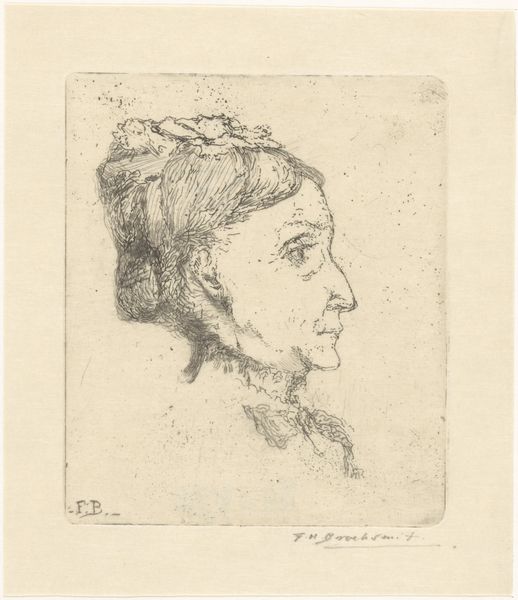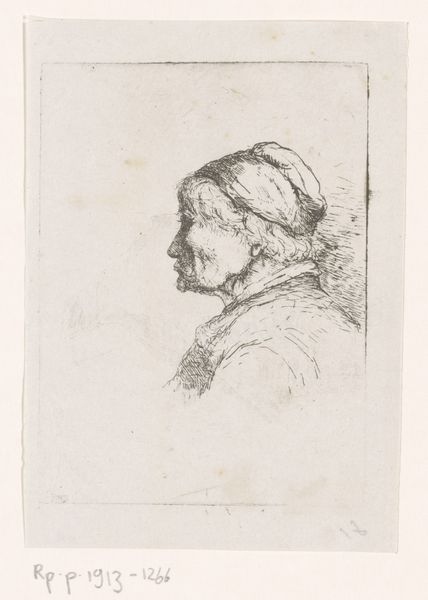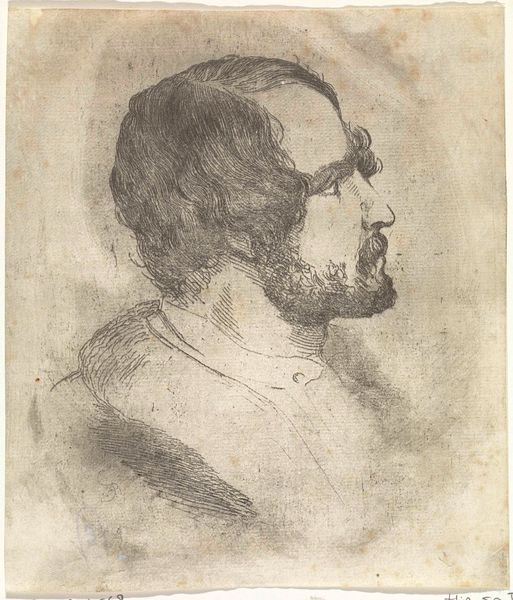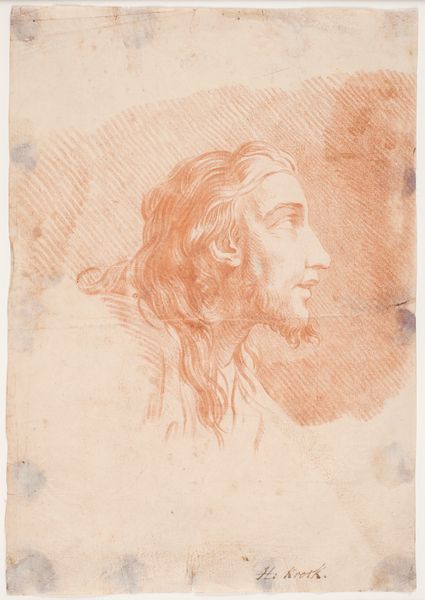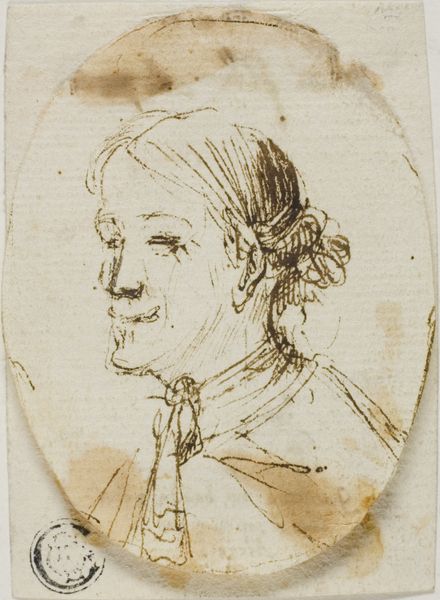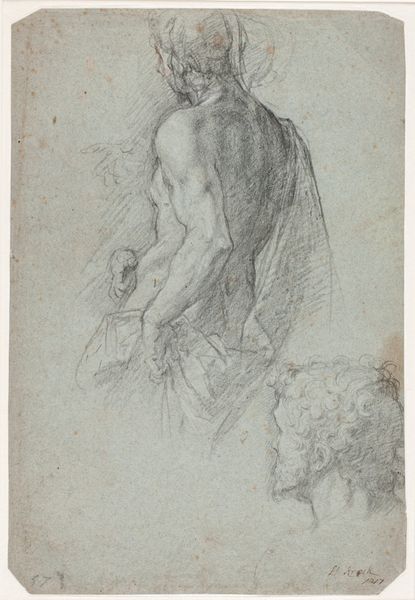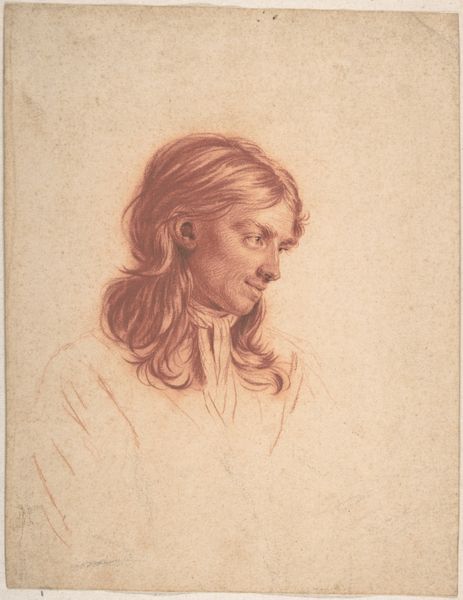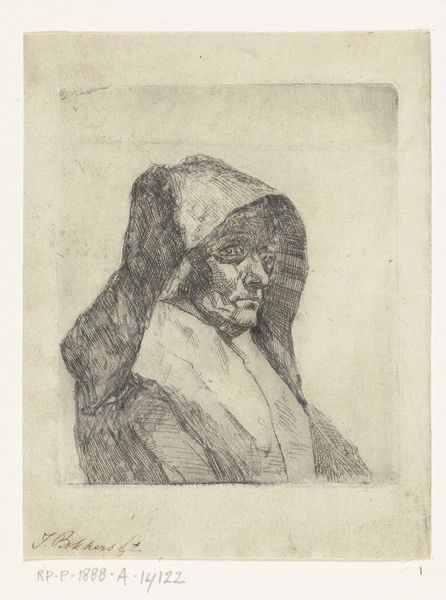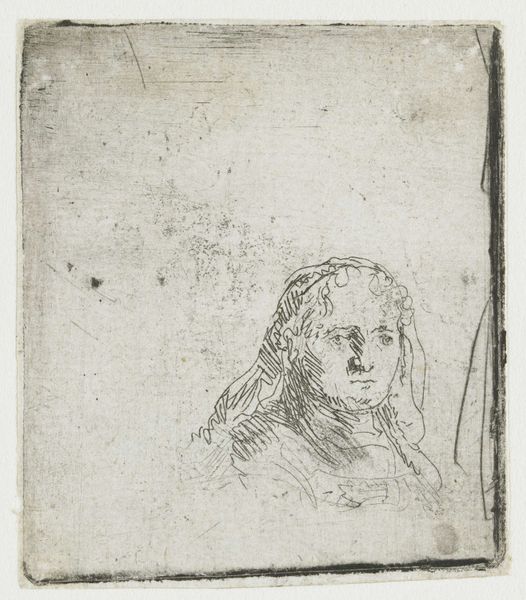
drawing, print, ink, pen
#
portrait
#
drawing
#
baroque
#
head
# print
#
ink
#
pencil drawing
#
pen
#
portrait drawing
Dimensions: 3-13/16 x 4-1/16 in. (9.7 x 10.3 cm)
Copyright: Public Domain
Curator: This evocative work before us is "Head of Christ," a pen and ink drawing created by Pedro Duque Cornejo sometime between 1695 and 1705. Editor: It's so tender, almost fragile. The delicate lines create a mood of quiet contemplation. His gaze is lowered; there's a feeling of intense sorrow, wouldn't you say? Curator: Absolutely. Consider the period, the late Baroque. The Catholic Church, particularly in Spain, experienced heightened religious fervor, prompting an intensified focus on Christ's suffering and sacrifice. Images like this would have reinforced prevailing ideas about contrition and empathy. Editor: And you can see that mirrored in the stylistic choices: the way the artist renders the eyes, the precise cross-hatching around the face that suggests pain…even the bowed head speaks volumes. It's an instantly recognizable visual shorthand for piety and humility. Curator: Exactly. Beyond its devotional function, though, this drawing also participates in larger conversations about the representation of masculinity and suffering in religious art. We see in Cornejo's depiction, elements of the archetypal Christ, while also suggesting perhaps an almost feminized suffering. Think about societal expectations around composure, for example, especially regarding religious and gender identity. Editor: I'm also intrigued by how Cornejo conveys so much with so few lines. Pen and ink seem particularly well-suited to represent Christ. Throughout the ages, the cross itself has often been portrayed in minimalist styles, from ancient runestones to modern crucifixes; the simple, linear style serves to emphasize the core Christian ideals. Curator: A point well taken. The raw simplicity certainly focuses our attention on the subject's inner emotional landscape. Furthermore, because the church was trying to reestablish its preeminence in the face of the rise of reason and individualism during the Enlightenment, images like these become central to forging the social narratives within their culture. Editor: So, ultimately, it is a visual distillation of a potent cultural message, rendered with extraordinary sensitivity. Curator: Precisely. The work embodies, with quiet power, the convergence of faith, representation, and identity at a crucial historical juncture.
Comments
No comments
Be the first to comment and join the conversation on the ultimate creative platform.
